In Caldwell we recently encountered some Norway rats: 
We don’t encounter them too often, and when we do, it’s a bit of a treat, strangely enough! Norway Rats have a few aliases: sewer rat, brown rat, gray rat, etc. They were introduced to United States from Europe in the late 1700’s, and have been loved by americans ever since (joke!).
Compared to mice, Norway Rats are huge, and can weigh up to a pound, and, in our experience, about 10 to 12 inches long from nose to tail. As you can see the pictures, they are a gray-brown color.
Rats just like other rodents, are prolific breeders. After a gestational period of 22 days, a litter of around 10 young, called “pups” are born. In 12 weeks pups can reach sexual maturity, starting the process all over again. A healthy female can birth up to 20 pups annually. Lifespans can vary greatly depending on local conditions and food sources. In the wild, Norway rats will typically live six months to year.
These rodents are social, with groups living in outdoor burrows, barns, outbuildings, inside houses, warehouses, sewers, dumps, etc. Chicken coops are a particular favorite, as shelter and abundant food and water supplies are near. This is what we encountered in Caldwell. Right next to the chicken coop, there was a small shed:
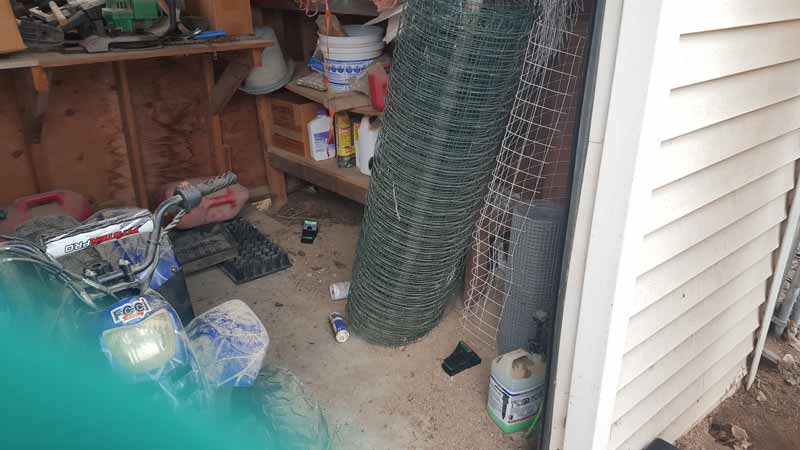
There were abundant droppings basically everywhere. Little known but gross pest control fact: you can actually distinguish a Norway rat from another type of rodent by its droppings. Based on this fact, we quickly determined that they were Norway rats. We went about trapping the inside of this shed, and outside next to the chicken coop. We placed bait stations in areas near the burrows, that were all over and under this shed. Having burrows next to foundations and under foundations is very typical of this rodent, and it was no different in this circumstance. After having placed our traps and bait stations, we told the homeowner that we would be back in a few days. Rats are neo-phobic, meaning they have a fear of new things. It takes Norway rats a few days to get used to new objects in and around their dens. After a few days, we figured that they would over there fear and get into the traps and bait. We turned out to be correct:
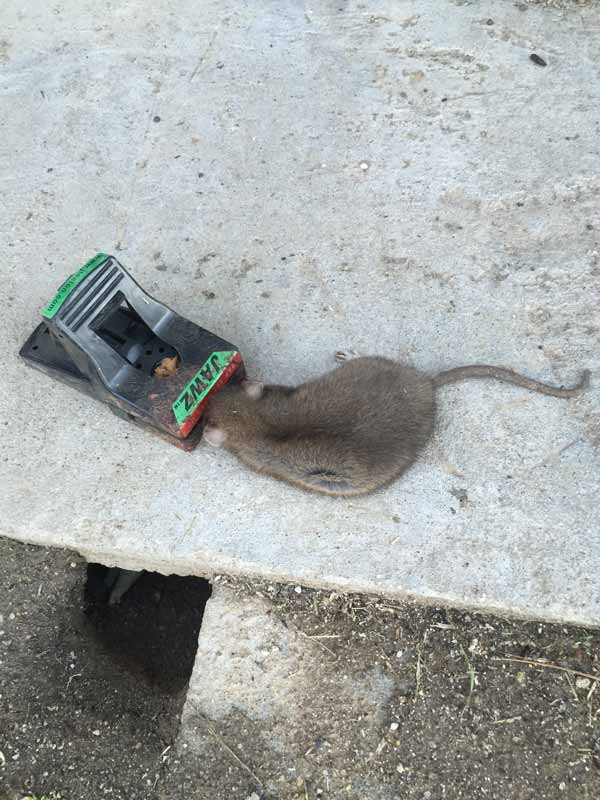
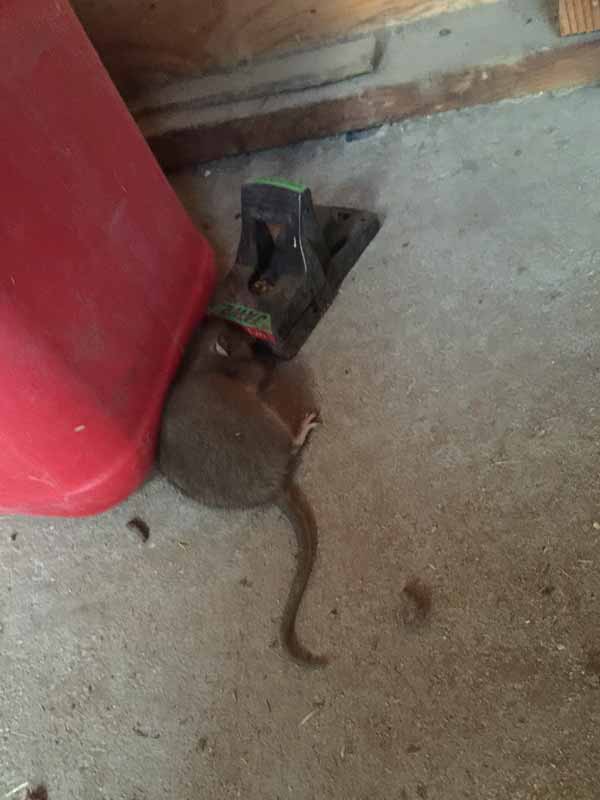
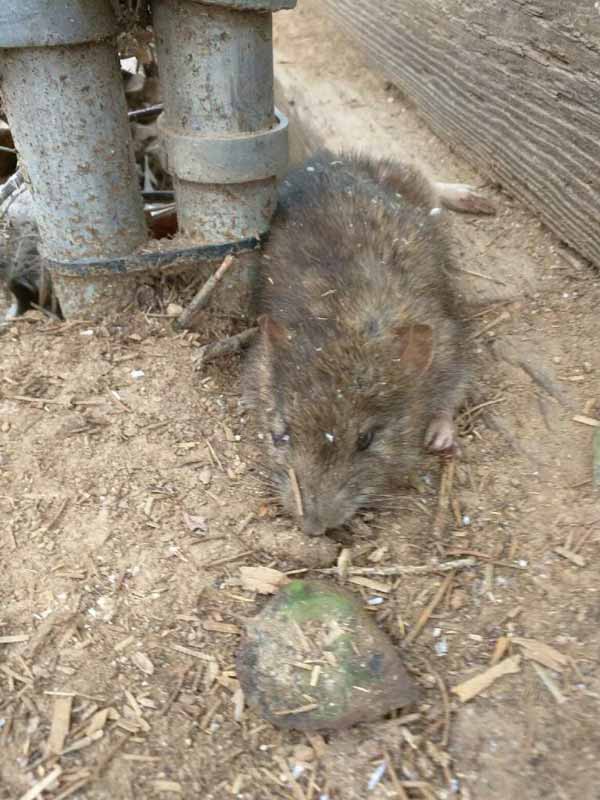
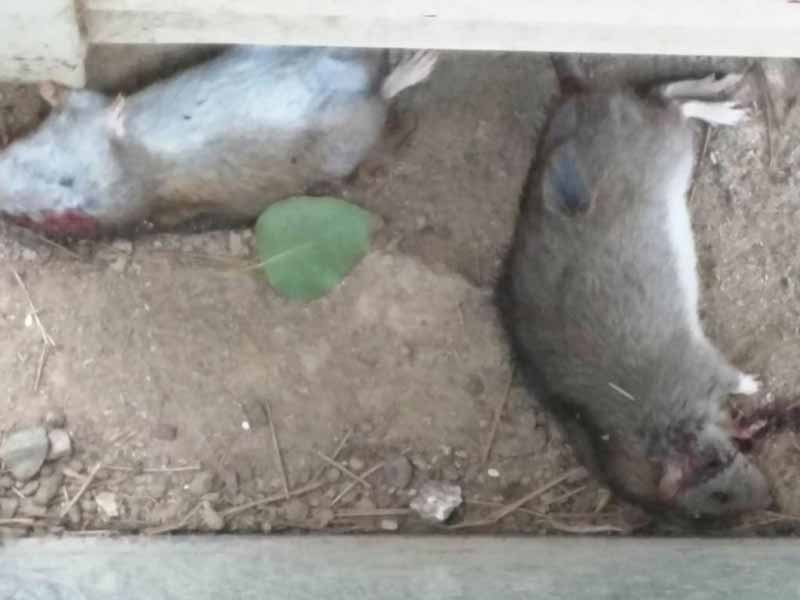

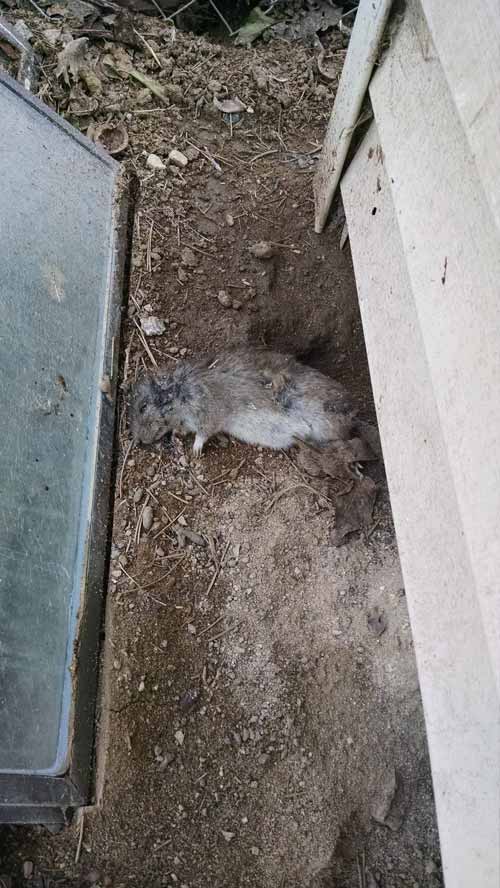
Norway Rats eat almost anything, and are excellent scavengers. They even demonstrate cannibalistic tendencies-one of their bodies were caught in the traps, they ate their entire body, minus the head and skin. I guess there is no honor among thieves and rats:
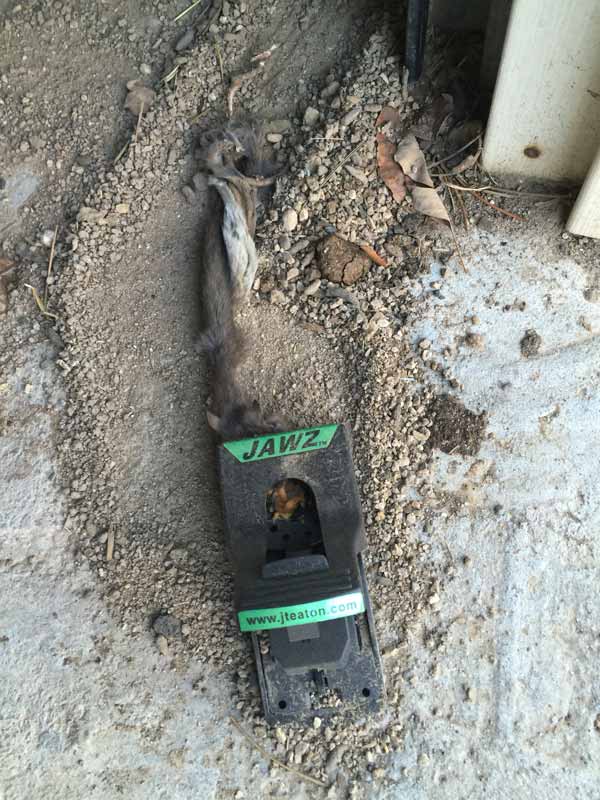
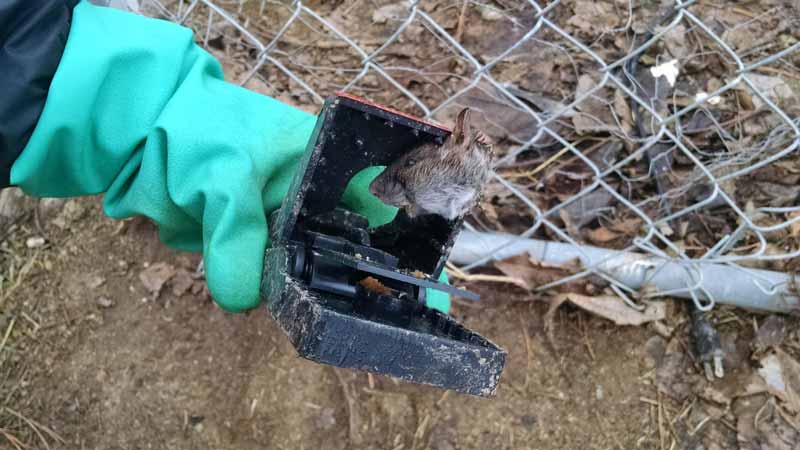
All in all we took about 10 to 15 rats out of this location, and got them taken care of within a period of about a month.
Now I’m sorry that you might’ve lost your appetite reading this blog. Take comfort, however, in the fact that you now know someone to take care of rats. If we can help you in this regard, give us a call! (not about losing your appetite, though. Call Pizza Hut for that)
